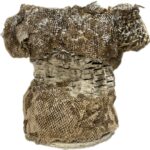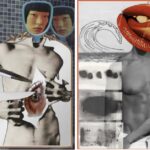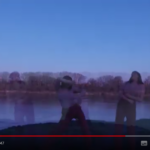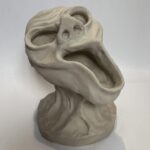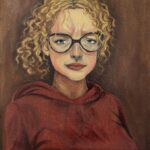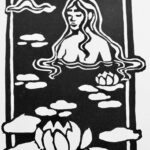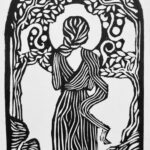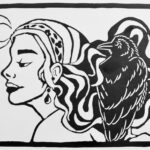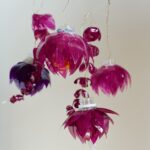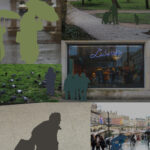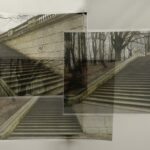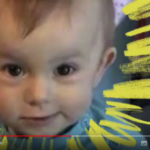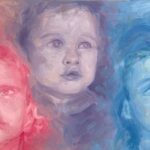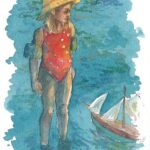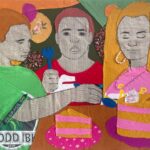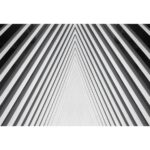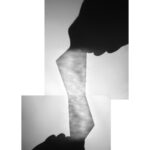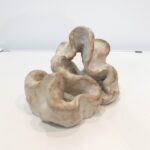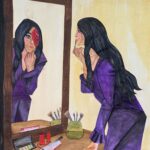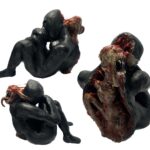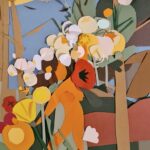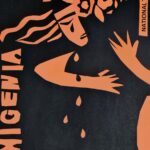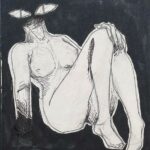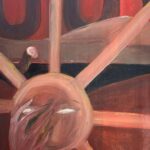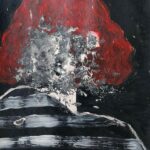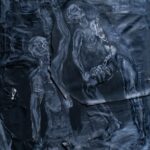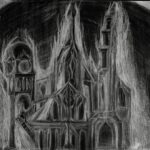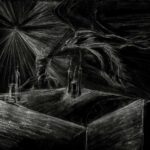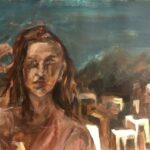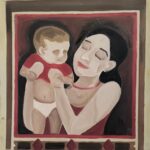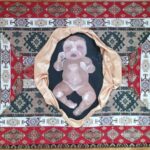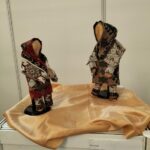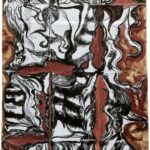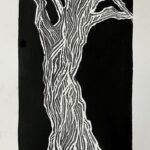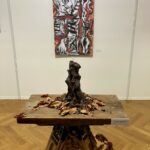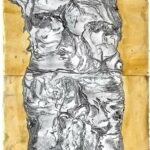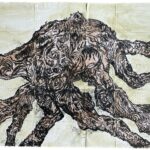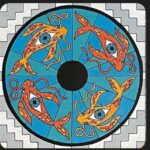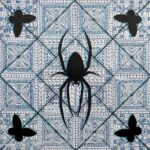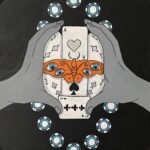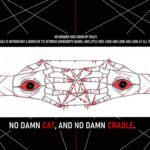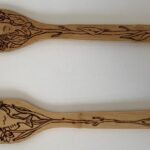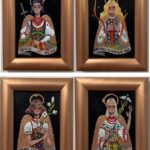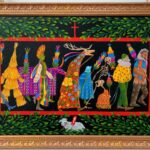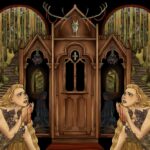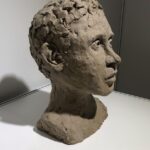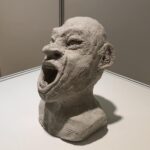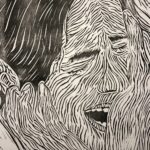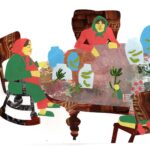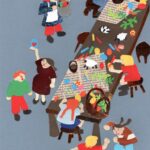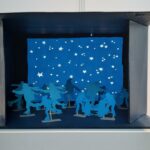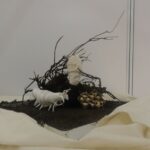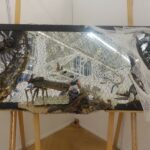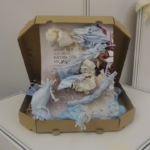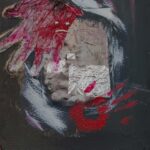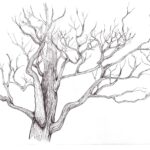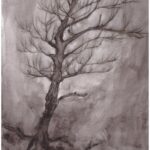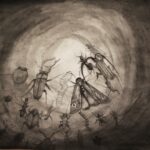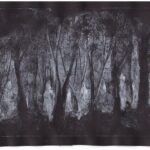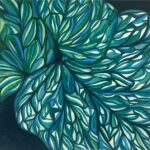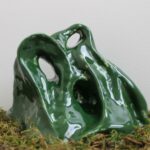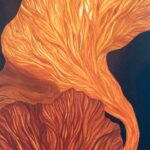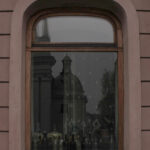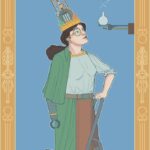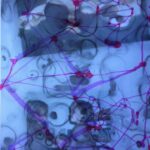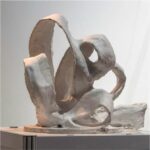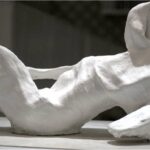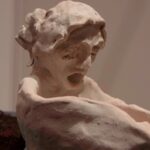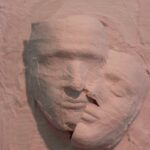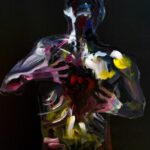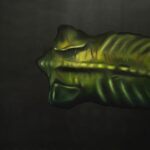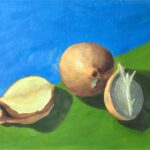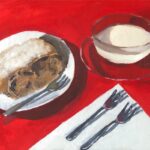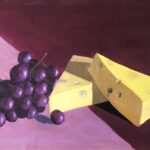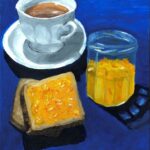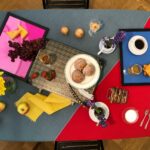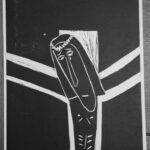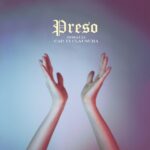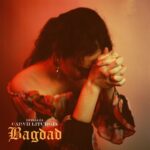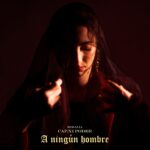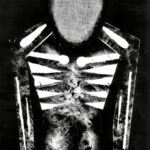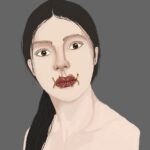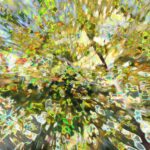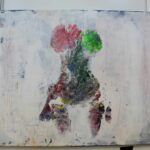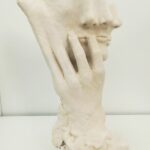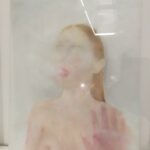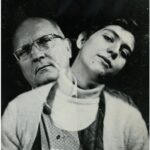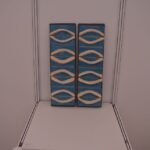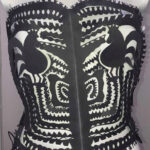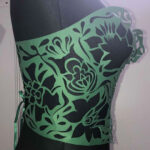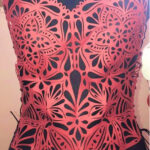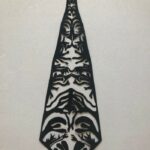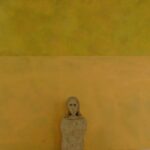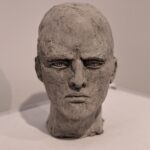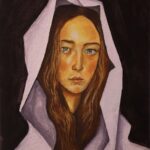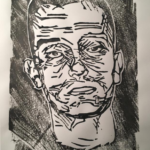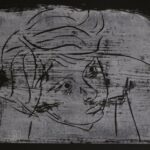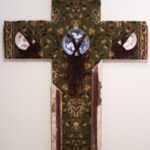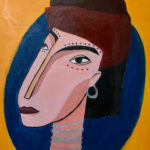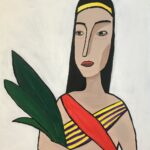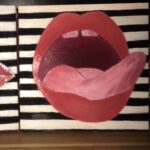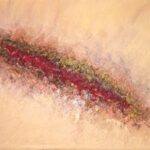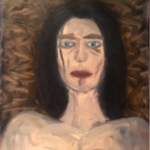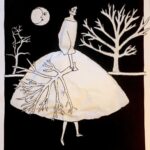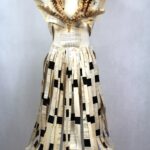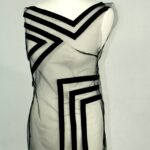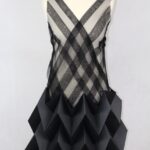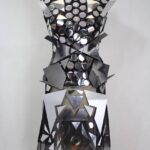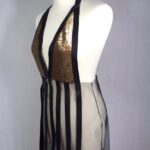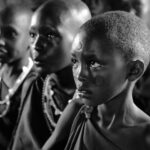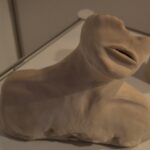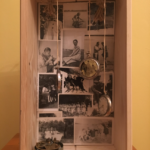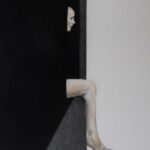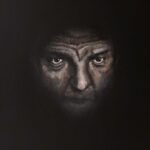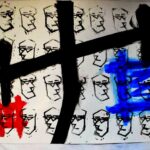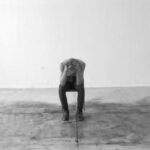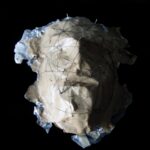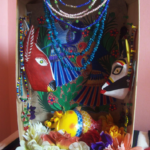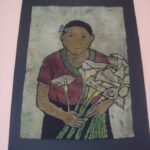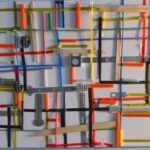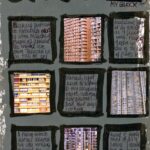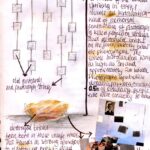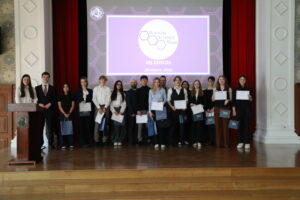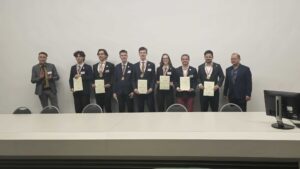Visual Arts
Program Visual Arts IB DP adresowany jest do szerokiej grupy uczniów zainteresowanych sztukami wizualnymi, od tradycyjnych form, takich jak rysunek, rzeźba i malarstwo, architektura, wzornictwo czy fotografia, po instalacje, performance czy video art. Niektórzy uczniowie VA wybierają po maturze studia artystyczne, wielu jednak to osoby zdecydowane na inne kierunki, jednak chcące lepiej rozumieć sztukę i poszukujące środków własnej ekspresji artystycznej. Celem programu jest w pierwszym rzędzie rozwijanie indywidualności ucznia i umiejętności niekonwencjonalnego myślenia. Każdą osobę zachęca się do poszukiwania własnych rozwiązań zamiast powielania gotowych wzorców.
W trakcie programu uczniowie mają okazję poznawać ogromną ilość dzieł sztuki z całego świata, poczynając od współczesnych po te z odległych epok. Szczególny nacisk kładziony jest na kulturę polską i europejską, zgodnie z intencją IB learner profile („We critically appreciate our own cultures and personal histories, as well as the values and traditions of others”). Osobiste fascynacje i inspiracje uczniów znajdują następnie wyraz w ich własnej twórczości (patrz Exhibition) oraz w Process Portolio, a także Comparative Study (przykładowe pliki do wglądu poniżej) Integralną częścią programu są wyjścia do muzeów i galerii, a także dłuższe wyjazdy edukacyjne (zwykle dwa w Polsce, jeden zagranicę)
Internal Assessment (40%) ExhibitionHL 8-11 artworks SL 4-7 artworks
W klasie maturalnej uczniowie Visual Arts pracują indywidualnie nad przygotowaniem wystawy, która stanowi 40% matury. Wernisaż wystawy dyplomantów Visual Arts organizowanej w Auli naszego liceum odbywa się co roku z początkiem marca. Uczniowie mają całkowitą swobodę wyboru tematu i technik wyrazu.
Galeria
W galerii obejrzeć można niektóre prace z wystaw dyplomowych absolwentów Visual Arts z lat 2014-2024 (od najnowszych do najdawniejszych)
Martyna Zbucka
Maja Kalisz
Maja Wiewiórowska
Joanna Gąsior
Martyna Ciesielska
Anna Domownik
Izabela Kawycz
Aniela McGrath
Anna Nowosielska
Hanna Rumowska
Barbara Sosnowska
Franciszek Źrebiec
Eryk Kiepuszewski
Julia Twardzisz
Aleksandra Fixl
Bartłomiej Głomski
Julia Claver Pater
Pola Pawlak
Aleksandra Abucewicz
Jan Bąk
Autor pragnie zachować anonimowość
Natan Lewandowski
Witold Marynowski
Franciszek Cudek
Michał Głomski
Katarzyna Kowalczyk
Zuzanna Mietlińska
Julia Rocka
Nina Ledwoch
External Assessment 60%
Zewnętrzne komponenty matury Visual Arts IB DP to Process Portfolio (40%) oraz Comparative Study (20%), wysyłane do IB w postaci plików cyfrowych.
Process Portfolio 40% HL 13-25 screens SL 9-18 screens
Process Portfolio stanowi zapis indywidualnej drogi twórczej przebytej przez ucznia w trakcie kursu Visual Arts. Obrazuje jego osobiste fascynacje, inspiracje twórczością wybranych artystów, poszukiwania optymalnych środków wyrazu i zmaganie o osiągnięcie możliwie najlepszych rezutatów w wybranych technikach. Daje wgląd w kolejne etapy powstawania prac, od pierwszych koncepcji, poprzez próby i błędy, aż do ostatecznej wersji (prace wybrane przez ucznia na wystawę oznaczone są jako"Exhibition") .
Comparative Study 20% SL max. 15 screens HL max. 20 screens
Comparative Study jest akademicką pracą badawczą, w której uczeń wybiera do analizy trzy dzieła sztuki z co najmniej dwóch odmiennych kontekstów kulturowych. Krytyczna analiza obejmuje aspekty formalne, wpływ osobistych doświadczeń artysty, jak również określonej kultury na formę, funkcję czy przesłanie dzieła. Uczniowie wybierający dyplom z Visual Arts na poziomie HL muszą dodatkowo udokumentować osobistą inspirację twórczą przynajmniej jedną z analizowanych prac. Przykładowe pliki Comparative Study do wglądu w załączniku. Przykładowe pliki Process Portfolio do wglądu w załączniku.
Recent Extended Essays in Visual Arts
How was the traditional Polish country manor house architecture adapted to the requirements of an urban environment in interwar Poland on the example of the Żoliborz district in Warsaw?
What role do textiles play in Małgorzata Mirga-Tas’ “Re-enchanting the world” installation?
To what extent have the visual aspects of La La Land inspired
been inspired by the films of the French New Wave and the Golden Age of Hollywood?
What commonalities and differences can be detected between Alina Szapocznikow’s and Ana Mendieta’s artistic explorations of their own bodies?
How was the “Rusalka” motif depicted in the works of Polish turn of the 19th and 20th century artists, and what specific cultural factors affected these depictions?
In what ways did Henryk Semiradzki’s painting embody the aesthetic ideals of 19th century Academic art?
What connects Edward Hopper’s and Vilhelm Hammershři’s portrayal of
the figure in the interior?
In what ways and to what extent does Bruno Schulz’s visual work reflect his literary oeuvre?
What purpose did music serve in Zdzisław Beksiński’s creative process?
What parallels can be found between Jerzy Tchórzewski’s and Jacopo Tintoretto’s religious paintings?
RQ:
What similarities and differences can be detected in the three artists’ treatment of the motif?
RQ: To what extent does Daniel Roseberry continue Elsa Schiaparelli’s
legacy as new creative director of the Schiaparelli fashion house?
Extended Essay in Visual Arts
Do wglądu tematy wszystkich Extended Essays z Visual Arts napisanych przez naszych uczniów w latach 2012-2022
The reception of street art in three Polish cities: Warsaw, Gdańsk and Wrocław.
In what ways do the illustrations of Elviro Andriolli, Tadeusz Gronowski and Jozef Wiłkoń visually reinterpret the text of the Polish national epic?
RQ What are the aims of Polish graffiti artists and to what extent are they successful in communicating those to the public?
RQ: In what ways did Polish folklore inspire designers over the past 100 years? To what extent have these reinterpretations been artistically successful and why?
What distinguished Polish film and theatre posters of the 1960s-70s?
In what ways has Japanese culture inspired Polish artists from the era of Modernism till our times?
What aspects of the icon tradition have inspired chosen Polish artists and with what effect?
How does contemporary Polish children’s book illustration compare with the Polish School of Illustration?
In what ways has Polish folklore inspire designers over the past 100 years? To what extent have these reinterpretations been artistically successful?
RQ: In what ways have contemporary fashion designers drawn inspiration from 20th century Abstract Art?
Is street photography really Art?
How could outdoor advertising in Warsaw’s City Center be altered to enhance the visual quality of the local urban setting?
In what ways does contemporary fashion photography exploit the masterpieces of European Renaissance and Baroque painting and with what effect?
Does schizophrenia lead to shared visual qualities in the artwork of mentally ill artists?
To what extent is the current image of the Bauhaus consistent with the original assumptions if its creators?
Was the Polish Poster School really unique and if so, what made it such ?
In what ways and by what means did the Architecture and Urban Planning of Warsaw in 1950s serve the purpose of the Communist Party?
In what ways have contemporary artists endeavoured to combine dance and visual arts?
What links Katarzyna Kobro’s work to De Stijl and to what extent was her work unique?
In what ways did concentration camp experience translate into the oeuvres of Alina Szapocznikow and Józef Szajna?
How did the use and meaning of stained glass change in the 20th and 21st centuries, compared to the Gothic era?
How have the aesthetics of Polish residential districts changed over the past five decades?
To what purpose and what effect was the tiger motif represented in Korean art over the ages?
To what extent were the post-war paintings of Salvador Dalí influenced by artistry and imagery of the Spanish Baroque painters?
In what ways are the works of Damien Hirst and 17th century Vanitas still life paintings similar/dissimilar in their understanding and presentation of mortality?
To what extent does the work of Jerzy Tchórzewski share the qualities of American Abstract Expressionism?
To what extent does Norman Foster’s Metropolitan building harmonize with the historical urban setting of the Piłsudski Square in Warsaw?
In what ways and for what purpose is logic represented in the conceptual works of Jarosław Kozłowski from 1970s?
To what extent has the Munich School shaped the artwork of Alexander Gierymski?
How is meaning conveyed in movie posters of the PPS and to what extent is this understandable for the contemporary audience?
To what extent are contemporary Polish street artists drawing inspiration from their native culture and with what effect?
How does Wyspiański’s treatment of the female motif differ from that of other leading Art Nouveau artists – Alphonse Mucha and Gustav Klimt?
In what ways has Tadeusz Kantor’s oeuvre influenced Igor Mitoraj’s sculptures?
In what ways do contemporary tattoo artists use appropriation and with what effect?
How does the graphic design of Frank Nitty compare with the oeuvre of Dadaists and Surrealists?
In what ways do contemporary Warsaw architects incorporate the characteristics of avantgarde residential architecture of 1930s and with what effects?
To what extent can the Old Master-inspired fashion designs of Alessandro Michelle and Jeff Koons be considered high art and on what grounds?
What is the nature of Filip Custic’s newly-emerged Objectism trend and to what extent does it draw from 20th-century Surrealism?
In what ways do Jerzy Duda-Gracz and Chaim Soutune deploy the 17th century Dutch motif in their painting? What do these reinterpretations suggest about the development of European art?
- What cultural and social phenomena prompted Lempicka’s choice and use of the fabric motif and with what effect?
Which specific elements of Vermeer’s oeuvre did the makers of the Girl with a Pearl Earring employ and with what effect?
Is there a common denominator to the use of colour in Wes Anderson’s movies? Based on the analysis of Bottle Rocket (1996), The Royal Tenenbaums (2001) and The Grand Budapest Hotel (2014).
What connections can be found between Vilhelm Hammershøi’s painting and the cinematography of “Corpus Christi”?
To what extent does the housing estate Miasteczko Wilanów reflect the idea of a well-tempered city?
In what ways and did Salvador Dali and Stanisław Ignacy Witkiewicz endeavour to employ the Surrealist subconsciousness concept in their art?
In what ways were Le Corbusier’s philosophy of architecture and his „Five Points of Modern Architecture” realized in the design of the Wedel House, and how much of the original concept has persisted throughout the years 1936-2020?
How did the European commercial poster art of the 1880-1914 period influence European propaganda posters of World War I?
How did Zofia and Oskar Hansen’s architectural vision of Przyczółek Grochowski estate translate into practice and with what effect?
How does Zbigniew Rychlicki adapt his technique and
formal choices to the meaning of specific texts illustrated?
What inspirations did Zofia Stryjeńska draw from to create her depictions of Slavic gods?”
Can Abloh’s fashion design be described as „groundbreaking”, and why?
What significance do Vlisco and commemorative fabrics assume within the context of Crosby’s painting?


